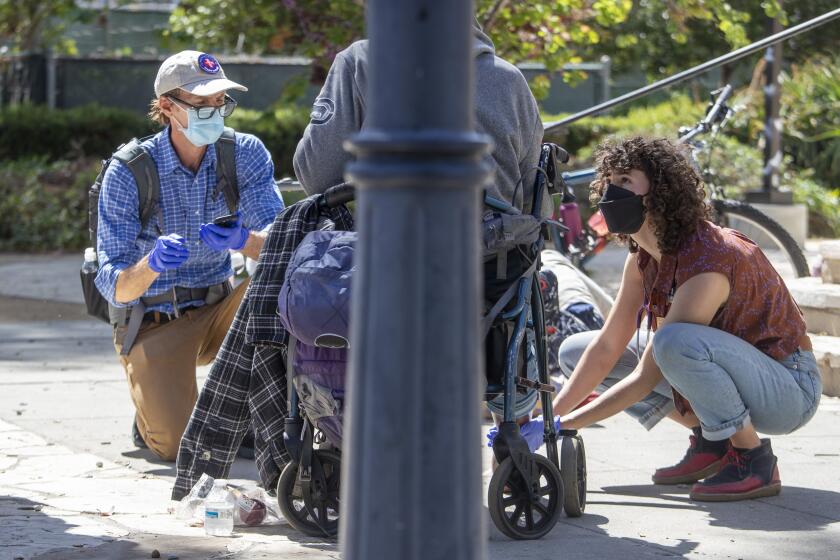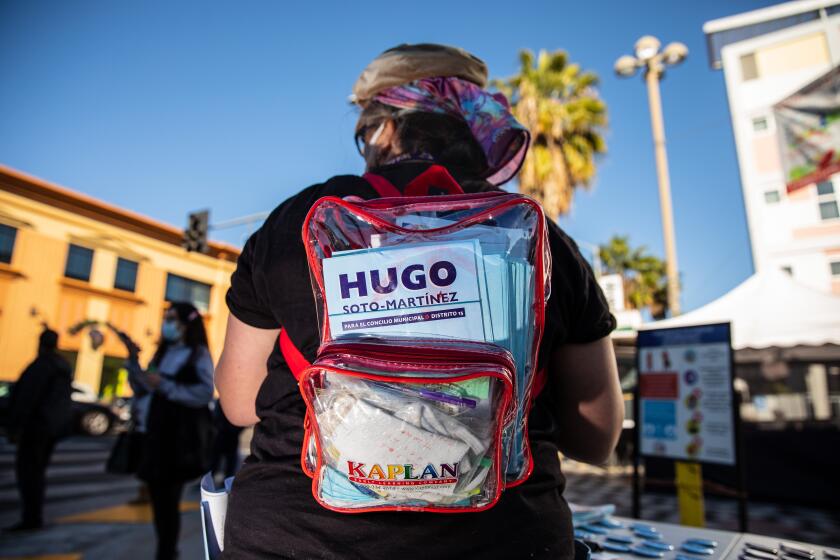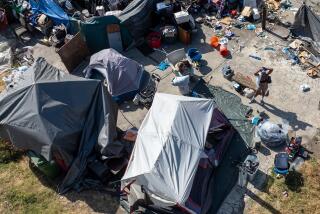Column: He was homeless and in hospice. His recovery is a lesson in what it takes to save a life
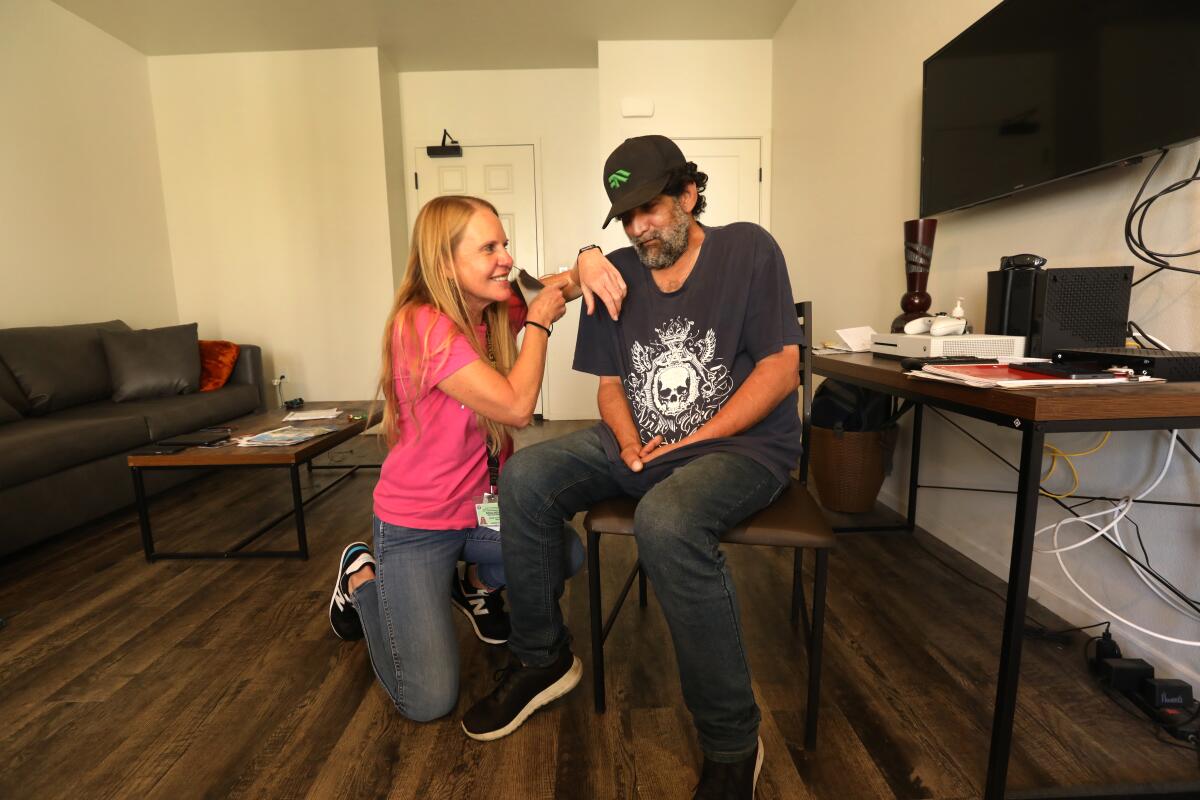
- Share via
He’s been homeless, behind bars, in hospitals and near death in hospice care. Social workers who had known him for years visited his bedside to say their goodbyes.
Then Sean Sauceda, 52, came back from the brink.
I met Sauceda at his new apartment in Inglewood, where he grows tomatoes and basil in the garden, takes care of a friend’s two kids every once in a while, and thinks about getting a cat.
“I want to live,” he told me in the living room of his home. “I want to be kept alive.”
This is a story about one man’s recovery, but also about how much work it takes to turn around the life of someone with a long history of multiple problems. It’s not uncommon for someone to get help, and even a place to live, but end up homeless again.
I visited my buddy Nathaniel not long ago with one of his former case managers, a social worker who said the system does a decent job of getting people in the front door, but loses too many out the back door. It took a year for me and others to get Nathaniel indoors, and it’s taken 15 years of vigilance to keep him housed and cared for.
As I kept an eye on local elections in Los Angeles, with homelessness and housing central issues and promises about who’s going to get the most people through the front door, I didn’t get the sense that candidates fully understand how essential this continuum of care is.
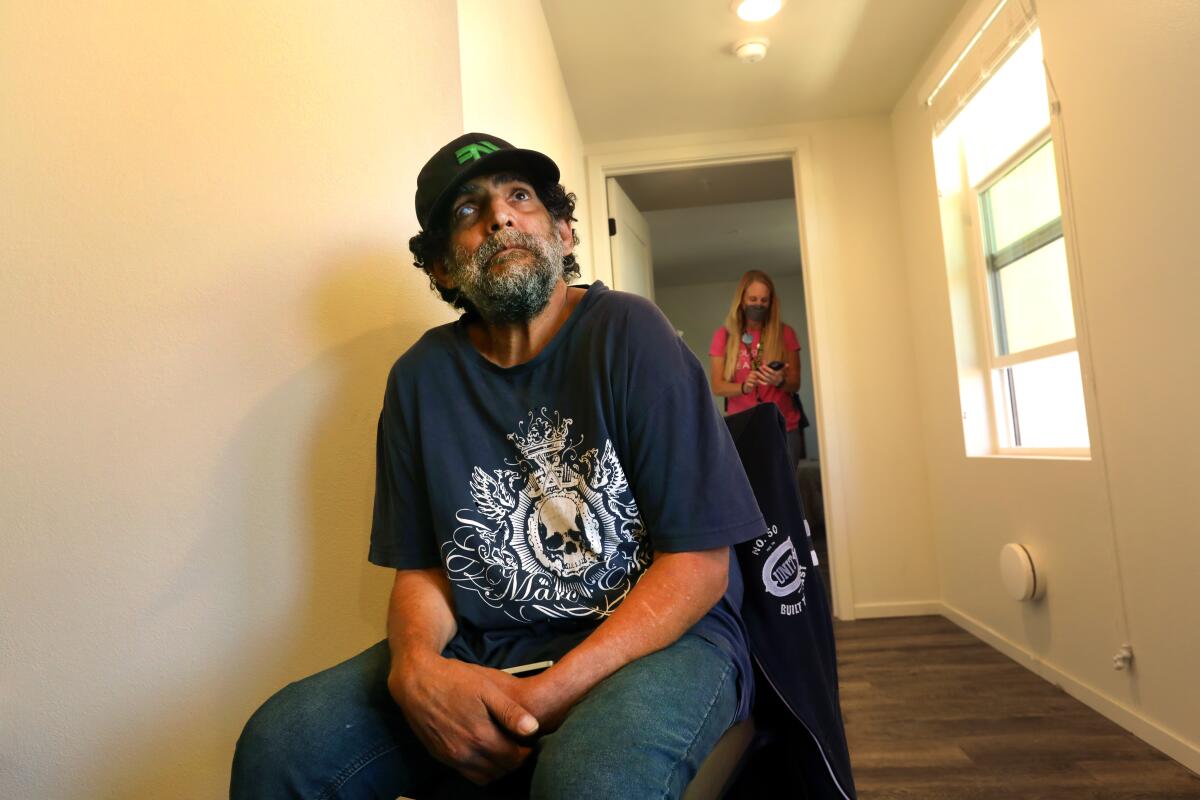
Sauceda is now a client in Housing for Health, a 10-year-old L.A. County program that does outreach, lines up housing and provides long-term case management. Because of budget limitations it doesn’t get to everyone who needs the help, and it’s an expensive proposition, but so too is churning people through courts and jails, and it’s far more humane.
“The journey of caring for people experiencing homelessness does not end when they enter a motel room or a house or whatever it is,” said Dr. Heidi Behforouz, medical director of Housing for Health.
Not everyone who is homeless in L.A. County needs what’s called Intensive Case Management Services. But roughly one-third of the estimated 66,000 or so unhoused people are “medically vulnerable” and can benefit from someone “following them through the arc of their lives,” Behforouz said. Physical and mental issues are common, as is addiction.
Progress is finally being made in deploying vans with street medicine teams to help L.A.’s massive homeless population.
At the moment, Housing for Health has about 17,000 clients, and their care and management is provided by dozens of agencies, including nonprofits under county oversight. For the many who have serious and even terminal health conditions, a medical team led by Behforouz makes house calls, and I’ll have more on that in the next column.
Like so many people who end up on the street, Sauceda had a rough start in life. He doesn’t know his parents and described his childhood like this: “Whatever facility had a spot for me is where I went, basically.”
Sauceda was diagnosed with bipolar disorder. As an adult living on the streets, mostly in little dens he carved out in secret places around Pasadena, he got into multiple fights with other homeless people and cops.
Sauceda got hooked on drugs. His heart was failing. He was diagnosed as HIV-positive. He’s just about blind in one eye. In his lowest moments, he says, he tried “jumping off of [things] and throwing myself in front of vehicles,” but all he accomplished was to bang himself up.
“Sean has 25 lives,” said Sieglinde von Deffner, Housing for Health’s skid row coordinator.
She was at Sauceda’s Inglewood apartment along with two colleagues who have looked in on him over the years — Patricia Nwaekeke and Beatrice Tan.
It’s not uncommon for social workers to have years-long relationships with homeless people. The goal is to stay connected, monitor clients’ welfare and earn their trust, building toward a time when housing is available and the client is ready.
Von Deffner — who along with her husband has a weekend lunch with Sauceda a couple of times a month — met him about 15 years ago while doing outreach for a nonprofit called Housing Works. She and then-colleague Shawn Morrissey, another of Sauceda’s angels, ended up at Union Station Homeless Services in Pasadena, the city where Sauceda spent most of his years while homeless.
He got housed more than once but didn’t stay. Rules can be confounding and confrontations all too common for troubled souls who’ve been bounced around in the system, and Sauceda — with little faith that the right situation existed — retreated to homes of his own making.
As his organs failed, he spent long stints in intensive care. In a county with an average of five homeless people dying each day, Sauceda was on the path to the morgue, and he was in hospice care for a while.
Von Deffner put in a call to Tan, hoping to get him into Housing for Health.
“I met him in the Union Station shelter. He was in a sleeping bag and he was really cold and frail, and he didn’t want to engage at first,” Tan said. “I made a promise to him. I said, ‘You know what? I’m very busy, but I’ll be there for you.’”
“She’s my life saver,” Sauceda told Tan in his apartment, but the sentiment seemed to be directed at all three of the women who have stuck with him.
Tan and Nwaekeke, also in the Enriched Residential Care program, offered Sauceda housing and intensive rehabilitation services. His health gradually improved over the next few years, and last year, the team thought he had progressed enough to move into supportive housing, which still provides services but offers more independence.
Sauceda told me that as his health improved, his mental outlook followed. He wanted it to work this time, and he’s hoping he can make that happen. Time will tell. Sauceda said that moving into the apartment in February was scary, and he’s still trying to adjust.
“The place is big,” he said of the one bedroom. “The closet is livable for one person, and this is ridiculous. … I’m perfectly happy in a box.”
As the nation moves to the right, Los Angeles went further left in last month’s primary election. Will ‘abolish the police’ play in November?
He doesn’t sleep on the bed, which he considers unnecessarily big and comfortable. He sleeps on the sofa, usually by day, and watches forensic crime dramas on TV by night. He checks in with a good friend he once shared the streets with. She’s indoors now, too, in the Midwest, and he hopes to visit her again for Thanksgiving, traveling by train.
Von Deffner said Sauceda checks on the people who helped him just as often as they check in on him, and he still drops by Union Station to say hello to friends.
“From the moment I met him, he was always taking care of other people or volunteering to clean up at the shelter,” she said.
Many years ago, Sauceda told me, he was looked after by the late Mollie Lowery — a mentor and inspiration to countless young social workers.
For a while, Lowery was case manager for my buddy Nathaniel. The three of us stood in the middle of skid row one day, as Nathaniel was about to lose his apartment, and Lowery promised him she’d find another place for him.
She lived by a motto that, to this day, is the only way for Los Angeles to get through this humanitarian crisis:
Whatever it takes, for as long as it takes.
More to Read
Sign up for Essential California
The most important California stories and recommendations in your inbox every morning.
You may occasionally receive promotional content from the Los Angeles Times.

